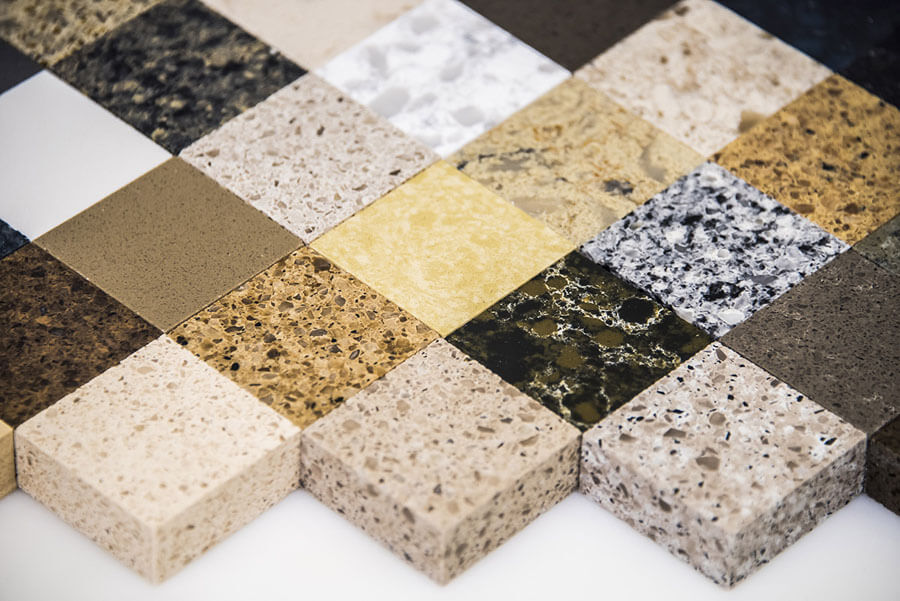 Granite is an igneous rock made up of primarily quartz, feldspar, micas, amphiboles, and a mixture of additional trace minerals. These minerals and their variation in abundance and alteration give granite the numerous colors and textures we see in granite countertops. Formally, granite is a plutonic rock that is composed of between 10 to 50% quartz (typically semi-transparent white) and 65 to 90% total feldspar (typically a pinkish or white hue).
Granite is an igneous rock made up of primarily quartz, feldspar, micas, amphiboles, and a mixture of additional trace minerals. These minerals and their variation in abundance and alteration give granite the numerous colors and textures we see in granite countertops. Formally, granite is a plutonic rock that is composed of between 10 to 50% quartz (typically semi-transparent white) and 65 to 90% total feldspar (typically a pinkish or white hue).
Granite is an intrusive igneous rock, which means it was formed in place during the cooling of molten rock. Generally, the slower the molten rock cooled, the larger it’s mineral crystals with K-Feldspar megacrysts forming in special circumstances greater than 5cm. During formation of granite it is buried below kilometers of rock and sediment necessary to produce enough heat to melt rock.
Of course, the granite we see today is near surface, and thus at some point was uplifted, causing overlying sediment to be shed via erosion. This transition from high pressure and temperature to atmospheric temperature and pressure can cause the granite to slightly expand and crack. This, in addition to seasonal variations in temperature can leave you with a weakened and less desirable granite to use for countertops.
Mineralogy
Granite is classified according to the QAPF diagram for coarse grained plutonic rocks and is named according to the percentage of quartz, alkali feldspar (orthoclase, sanidine, or microcline) and plagioclase feldspar on the A-Q-P half of the diagram.
True granite (according to modern petrologic convention) contains both plagioclase and alkali feldspars. When a granitoid is devoid or nearly devoid of plagioclase, the rock is referred to as alkali feldspar granite. When a granitoid contains less than 10% orthoclase, it is called tonalite; pyroxene and amphibole are common in tonalite.
Formation
A granite containing both muscovite and biotite micas is called a binary or two-mica granite. Two-mica granites are typically high in potassium and low in plagioclase, and are usually S-type granites or A-type granites.
Granite has a felsic composition and is more common in recent geologic time in contrast to Earth’s ultramafic ancient igneous history. Felsic rocks are less dense than mafic and ultramafic rocks, and thus they tend to escape subduction, whereas basaltic or gabbroic rocks tend to sink into the mantle beneath the granitic rocks of the continental cratons. Therefore, granitic rocks form the basement of all land continents.
Geochemical origins
Granitoids have crystallized from magmas that have compositions at or near a eutectic point (or a temperature minimum on a cotectic curve). Magmas will evolve to the eutectic because of igneous differentiation, or because they represent low degrees of partial melting. Fractional crystallisation serves to reduce a melt in iron, magnesium, titanium, calcium and sodium, and enrich the melt in potassium and silicon – alkali feldspar (rich in potassium) and quartz (SiO2), are two of the defining constituents of granite.
Granitization
This was supposed to occur across a migrating front. The production of granite by metamorphic heat is difficult, but is observed to occur in certain amphibolite and granulite terrains. In-situ granitisation or melting by metamorphism is difficult to recognise except where leucosome and melanosome textures are present in migmatites.
